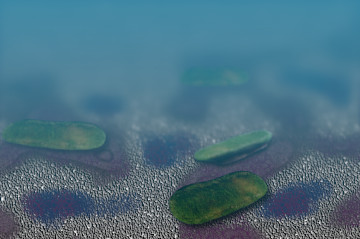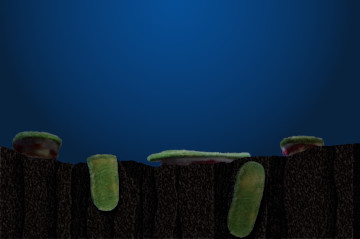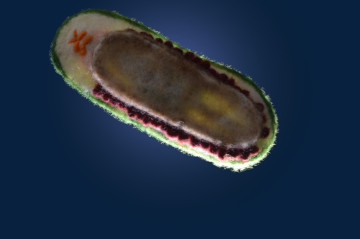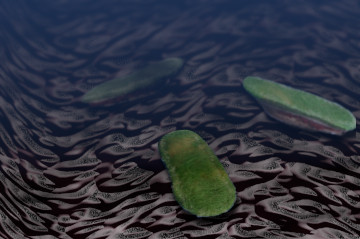Odontogriphus omalus
Odontogriphus is a slug-like shape, oblong or a rectangle with rounded corners, and is dorsoventrally compressed (in short, flat). It is about 125mm in length and about 43mm in width. The anterior half and posterior half of the body are neary similar shape. The dorsal surface has no any shells or spines 1), 2).
A radula (a molluscan feeding apparatus) with two or three chevron-like rows of teeth locates at the anterior ventral side, and behind it, a large and broad foot extends to the posterior end of the body. The both sides and posterior end of the foot is surrounded by gills or ctenidia (a respiratory organ of many molluscs) 1), 2).
Based on the shapes of radula and foot, Odontogriphus would have been crawling along biofilms on the rocks such as sheet-like masses of the cyanobacteria. They are often found together in the same layers. Odontogriphus may have fed on these biofilms and/or deposit mud of the seabed 1), 2), 3).
References:
- Caron JB, Scheltema A, Schander C, Rudkin D (2006) A soft-bodied mollusc with radula from the Middle Cambrian Burgess Shale. [abstract & supplementary information] Nature 442: 159-163. (DOI:10.1038/nature04894.).
- Odontogriphus omalus - The burgess Shale (Royal Ontario Museum)
- Smith MR (2012) Mouthparts of the Burgess Shale fossils Odontogriphus and Wiwaxia: implications for the ancestral molluscan radula. Proc. R. Soc. B. 279:4287–4295.(DOI:10.1098/rspb.2012.1577.)






re-created in May 2020.